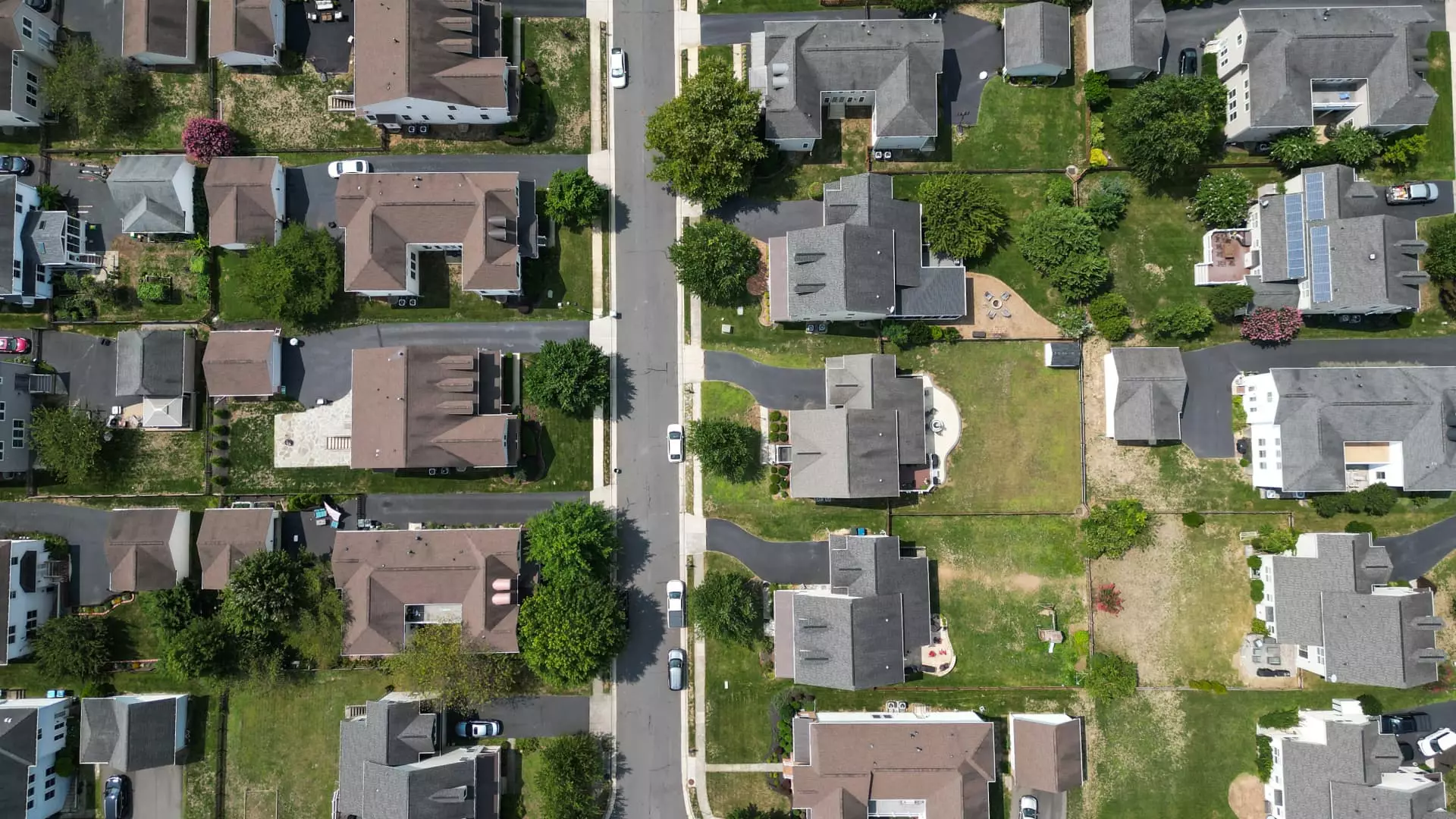Despite recent statistics showing a modest uptick in mortgage application volumes, beneath the surface lies a crisis of confidence that few are willing to acknowledge openly. The fact that mortgage demand barely nudged upward amid rising interest rates signals a dangerous complacency in our housing and economic outlook. When mortgage rates hit a four-week high of 6.84%, one would intuitively expect a significant drop in borrowing activity. Yet, the market displays surprising resilience—applications for home purchases inching upward by just 3%, and refinancing falling by 3%. This disconnect reveals that many consumers are either unheeding of the warning signs or are trapped in a cycle of necessity, not choice.
The numbers, superficially reassuring, obscure the deeper reality: home affordability is eroding at a rapid pace, and the pool of eligible borrowers is shrinking. The average purchase loan size has plummeted from $460,000 in March 2025 to just over $426,700 by this month—an ominous sign of declining home values and shrinking market confidence. To call this a ‘rebound’ would be misleading; instead, it shows a market desperately clinging to stability amid mounting economic headwinds. The nuanced truth is that rising rates are beginning to bite, yet the market refuses to fully capitulate. This resilience might be a false hope, masking a precarious situation that could unravel once the economic environment shifts further against borrowers.
Market Psychology and Political Ambiguity Fuel Uncertainty
Uncertainty isn’t just a matter of numbers; it’s driven by wider political and economic currents that shape borrower and investor sentiment. The recent reaction to Treasury Secretary Scott Bessent’s comments on Fed Chair Jerome Powell reflects how fragile confidence truly is. Bond yields fluctuated in response to speculation around Powell’s future, illustrating just how intertwined political stability and market health are. When key leadership and policy signals are in flux, it creates a ripple effect—affecting everything from mortgage rates to consumer confidence.
What’s troubling is how systemic this fragility feels. Despite the occasional optimistic report, the core metrics tell us that affordability continues to decline. The Federal Reserve’s cautious approach, combined with political uncertainties, leaves millions of potential homebuyers on the sidelines. The central bank’s hesitant moves amid external pressures risk creating a subdued housing market that discourages new construction and dampens economic growth. It appears that policymakers are content to maintain a fragile equilibrium, but in doing so, they risk tolerating a slow, eroding affordability crisis that could have long-lasting repercussions on the broader economy.
Is the False Sense of Security Sustainable?
The current state of the mortgage market is a precarious illusion—stability built on shaky foundations. While the numbers seem to suggest that things are holding steady, the underlying message is one of caution. Home prices are falling, borrowing capacity is diminishing, and the political landscape remains volatile. This situation asks the question: how long can this illusion of resilience last before a more dramatic correction occurs?
In a sense, the market’s resistance to rate increases is emblematic of a society that remains divided—clinging to the hope of normalcy while ignoring the structural challenges that threaten to destabilize it. The policymakers’ reluctance to decisively address affordability issues, combined with a cautious or indecisive Federal Reserve, suggests a watch-and-wait mentality that might ultimately prolong pain rather than prevent a crisis. The real challenge is whether we can navigate this period with pragmatic reforms and honest acknowledgment of economic vulnerabilities rather than succumbing to wishful thinking. For now, the market’s resilience is a fragile mirage—one that could vanish with the slightest shift in economic or political winds.


Leave a Reply